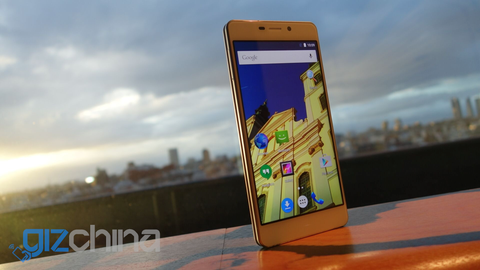After trying the Siswoo R9 Darkmoon on numerous occasions I’ve changed my opinion about the phone, perhaps you might too?
When I first learned that Siswoo had made a dual-screen phone, I got to thinking why? What really are the benefits of a secondary E-ink display? After a good search around and a lot of consideration I came up with 2. 1) An E-ink display uses less power and can prolong battery life, and 2) An E-ink display is better for reading in bright sunny conditions.
The first point can be seen as mute if you consider that having a second display by nature will take extra power from a phone, and that another display means less room for a larger battery. But this isn’t quite fair, at least for the R9 Darkmoon.
I’ve used the Siswoo R9 Darkmoon more than anyone (well anyone not at Siswoo) and with my hands on with the phone I came to the opinion that it isn’t fair to think of the R9 as a dual screen phone, it is much more than that.
First of all the build quality of the phone is above anything that similar Chinese manufacturers are able to achieve. The finish and fit of the alloy chassis is simply stunning, and the phone itself is surprisingly light-weight considering what it has to offer.
The front ‘main display’ is a really vibrant piece of kit. It’s 5.2-inch (the same size as I enjoyed on the Vivo Xshot) and boasts a Full HD resolution with a lovely 2.5D curve that matches the smooth alloy body.
A Mediatek MT6752 chipset might be an early 2015 generation processor, but it is still one of the better chipsets from Mediatek this year. I’m still confused as to why phone makers are giving their phones MT6753 and MT6735 processors. A MT6752 is always going to out perform in every single way. 3GB RAM makes sense with this powerful chipset too, as does Android 5.1 and 32GB storage as standard.
Siswoo even managed to do well with the cameras, giving the R9 Darkmoon a 13 mega-pixel main camera and 8 mega-pixel front, and if you want to share your photos quickly there is even NFC on board.
You see, even before we mention the Siswoo R9’s rear 4.7-inch E-ind display it is already shaping up to be a really well put together phone.
Now back to the point about battery life and the use of a secondary display. Siswoo have actually been working very closely with E-ink to ensure that users of the phone have a smooth transition from one screen to the other. The E-ink display does mean the battery in the R9 is just 2500mAh, but when not in use it doesn’t add to battery drainage. When the E-ink display is switched on it becomes the primary display, and uses such a small amount of power the battery life runs in to days!
And yes, viewing in direct sunlight on the E-ink rear panel is stunning, you simply cannot compare the E-ink panel for reading to a standard screen! Even one of high-resolution.
Siswoo R9 Darkmoon Gallery
Since Siswoo announced their R9 Darkmoon we have seen rival phone makers reveal that they too have dual screen phones, but we worry that the second display is going to be the main selling point of those phones, and the rest of the device (build, hardware, design) is going to be left to the last minute and rushed.
It’s interesting to see Siswoo, a comparably new phone maker, produce a product like the R9 Darkmoon. Every aspect of the device has been carefully considered to make it the best phone Siswoo have ever made, and the price reflects that. Its also impressive to see that Siswoo have managed to create a phone that can been seen as premium in its own right, rather than ‘just another dual screen device’.
We hope to receive a Siswoo R9 Darkmoon once production begins and the phone is officially onside, so keep your eye’s peeled for the full review.
Follow Gizchina.com on Google News for news and updates in the technology sector.


Could be a little bit cheaper, not allot of people are ready to trust a new brand with a 300$ phone.
It’s a bit pricey for a Chinese phone with a mid-range CPU, but competively priced against the other dual-screen smartphone available: the YotaPhone 2. I can see myself buying this since I do a lot of reading, but I’ll probably wait until they stick a Helios in there.